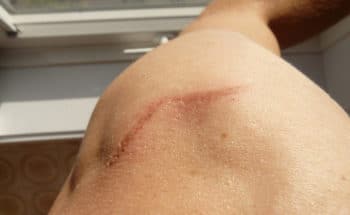Scars are remnants of wounds that have healed following an accident, injury or disease. They are made of fibrous tissue and vary in size, shape, color and texture. Scar revision surgery is a plastic surgery procedure to improve the condition or appearance of your scar.
Types of Scars

Before you undergo scar revision surgery, it is important to have an awareness of the different scar types, as this will determine which technique your surgeon will use.
- Subtle scars are marked by minor discolorations or surface irregularities, and do not cause physical discomfort. Examples include acne scars and those resulting from minor injuries or prior surgeries.
- Hypertrophic scars are comprised of thick clusters of scar tissue that develop over a wound site. They are usually raised, may cause some discomfort and are often red in appearance. They can widen over time.
- Keloids are larger and can be painful or itchy. They extend beyond the dimensions of the original wound and can appear anywhere on your body, but usually develop in areas with little underlying fat.
- Contractures occur where there is a significant amount of tissue loss, and are commonly found on burn victims. They restrict movement when skin and underlying tissue pull together during healing.
Scar Revision Procedure
Prior to treatment, anesthesia will be administered. Whether you are given local anesthesia, general anesthesia and/or intravenous sedation depends upon the type of procedure. You may undergo topical treatments to help the wound close and heal; these include gels and tapes to treat scars and discoloration.
Injectable treatments are used to fill sunken or depressed scars. They work by relying on steroid-based compounds to reduce collagen formation, but must be repeated periodically in order to maintain results.
Surface treatments are the most common type of scar revision, softening their appearance and reducing uneven pigmentation. Surface treatments either remove the top layers of skin or alter the existing tissue. Options include dermabrasion, laser therapy, chemical peels, and skin bleachers. Occasionally, deep scars require an incision for surgical removal.
After the producer, you will likely experience some swelling, bruising and discomfort for a week or two. The healing process continues as the scars gradually fade over time. Results are long-lasting or permanent, but it may take several months to a year before they are readily apparent.
Call Ear, Nose and Throat, LTD at (757) 623-0526 for more information or to schedule an appointment.